|
By Sara Wright
Last night I feasted on button mushrooms just after finishing this article which didn’t have a title. Suddenly an ancient memory surfaced… I was about three when my great grandmother and I used to play a game with the above name. I have had an intuitive sense that most mushrooms have similar medicinal values because they are all part of the underground fungal network even if they are grown on trees, grasslands or deserts. I decided to do a little research on the common button mushroom to support or refute my intuition. As I suspected button mushrooms do have most of the health benefits of those harvested in the wild. There are some differences but overall, they are minimal. If you are looking for a particular supplement it’s sensible to do your own research to find the mushroom you think has more of the benefits you need. Agaricus biporus is one of the fungal kingdom’s edible mushrooms that can be harvested at different stages of growth. When the fruiting fungi are young and white, we call these mushrooms buttons. At midpoint they become tannish cremini. At maturity the button becomes a portobello. All stages have the same medicinal/nutritional benefits. These fungi are grown on a composted substrate that is traditionally made from wheat, straw, poultry manure, and gypsum. Of course, these substrates are attached to mycelial network underground. My buttons thrive on compost heaps which are a blend of straw, and many other plant left overs. I don’t use any aged manure, but that’s because I don’t happen to have any. My button mushrooms efficiently break down the organic matter as all good saprophytes do. Unlike some people, I have no problem using any kind of manure as part of my substrate, because during composting microorganisms break down the matter producing a fiber rich, carbon containing humus with inorganic nutrients like nitrogen, phosphorus, and potassium. Scattering my compost is a new experiment I am presently engaging in, so I never know who is going to appear where. According to mycologist Merlin Sheldrake less than five percent of fruiting fungi have been studied and almost nothing is known of the underlying mycelial networks that support the (roughly) 20,000 mushrooms that appear above ground that we know about. Yet some mushroom species are already on the IUCN Red List. One of the ways mushroom spores function to support forest ecology is to rise into the atmosphere and bind with water molecules to create rain (Merlin Sheldrake). According to the New Scientist mushroom spores are also full of DNA that bind, re-combine, and mutate to produce genetic material that is diverse and adapted for changing climates. Other than these examples little is known about how mushrooms effect the ecology of the forests, grasslands, deserts they grow in. In deserts most mushrooms grow underground to avoid drought. With 33 million people in the US and the loss of a staggering number of forests, it seems prudent to forage in the wild with care. Please do not take more fungi than you need and allow some spores to seed woods and sky. Many small animals and insects love mushrooms, so I am assuming that removing too many fungi might also be a problem for wildlife. Most wild mushrooms including Oyster, Turkey Tail, Reishi, Shitake, Lions Mane and others can be grown quite easily. Many companies offer mushroom spawn and substrates for home growing as an alternative to foraging in the wild. Watching mushrooms develop is not only fun but educational. The first oysters I grew a bunch of years ago were so astonishing that I chopped and sauteed them reluctantly. I’ve grown other mushrooms including Lions Mane a particularly beautiful mushroom that looks to me like a frozen waterfall. I love the process of growing fungi at home and am never disappointed by the edible results. In the forest I do not forage focusing instead on the relationships between the fungi and the kind of forest that they live in. Each species has its own niche. I eat some of my button mushrooms at home but leave many for the rest of nature to feast upon. Until recently serious research hadn’t been done on Agaricus b. because the fungal fruits were so ‘common’. Yet I came across a surprising array of articles that discussed the similarity of the substances in button mushrooms to other wild fruiting fungi. Scientists at Penn state recently identified a new compound in button mushrooms that probably benefits gut health in ways we didn’t know about. Mushrooms as a group including buttons aid in digestive health as prebiotics. Prebiotics and postbiotics are less well-known but equally important for gastrointestinal and systemic health. Like wild fungi button mushrooms contain several different anti-inflammatory and antioxidant compounds that may help improve heart health. They are an important supplement for anyone that suffers from heart disease, one reason that I am delighted that my dogs love them. My Lucy has an enlarged heart. Button mushrooms boost immune systems naturally. They also have anti- tumor and anti-cancer properties. Buttons also have a number of other nutrients that benefit anyone who eats them. A breakdown of these fungi reveals that in a one cup serving, Aagaricus bisporus contains just as much potassium as a banana and can deliver between up to 30 percent of the daily recommended intake of B 1& 2 vitamins that are essential for human health. Regular consumptions of white button mushrooms may even improve mood by regulating hormones that also keep the brain healthy. White button mushrooms are also rich in both vitamin C and selenium, so they contribute to immune function. These mushrooms are one of the only plant foods that contain a natural source of vitamin D. Perhaps one of the surprising health benefits of button mushrooms is that they are a good source of plant protein. About one and a half cups of button mushrooms equals eating one egg. Recent studies have found that button mushrooms are particularly high in glutathione, an important antioxidant that helps combat free radicals. Free radicals attack important macromolecules leading to cell damage and homeostatic disruption. Other studies suggest that button mushrooms can improve immune function by increasing the production of antiviral proteins. Another benefit is that compounds found in button mushrooms called flavonoids have the potential to act as both antioxidants and pro-oxidants. Cells have a natural life and death cycle. We are constantly getting rid of old cells and creating new ones simultaneously. When cells refuse to die, they typically become cancer and tumor cells. The flavonoids work in two ways: when they are antioxidants, they help improve healthy cell survival, and when they act as pro-oxidants, they help encourage apoptosis, which is the natural cell death that helps prevent tumor growth. All nine amino acids are found in button mushrooms. Although this is hardly a comprehensive list of Agaricus’s virtues, it gives the reader a chance to reconsider wild foraging until we know more about forest ecology. And for those of you who are gardeners why not grow buttons on one of your compost heaps? The main threats to wild mushroom collecting are loss of habitat, water, air, and soil pollution that create toxic conditions for collecting that are not obvious even to experienced foragers. Fungi are adapted to specific geographic locations as anyone who spends time in a particular biome already knows. Change that ecology and the mushrooms are gone. Many thrive on specific trees, animals, or soil. If the hosts go extinct, the fungi go extinct too. Of course, a wildly erratic warming climate is another primal threat with droughts discouraging fruiting. Extended periods of rain and wet weather create a feast for fungal plant pathogens since the latter are dependent upon moisture for spore dispersal and plant infection. I’ll end this essay reminding folks that harvesting wild fungi for food and commercial use is a major factor affecting species survival. Please, let’s give the mycologists a chance to study mushrooms in the wild before we strip these places bare.
0 Comments
Reprinted with Permission from Canvas Rebel Image Credit Hebe Garcia We’re excited to introduce you to the always interesting and insightful Hebé García. We hope you’ll enjoy our conversation with Hebé below. Hebé, appreciate you joining us today. We’d love to hear about when you first realized that you wanted to pursue a creative path professionally. Since childhood, I have always been interested in drawing and painting. I used to watch my mother paint with admiration, and I still clearly remember the smell of turpentine, her oil paints, and her brushes. She kept all her art supplies in a room we called “The Empty Room,” which was not empty at all. It was filled with books, magazines, a sewing machine, photo albums, a black and white television, and an ironing board. However, the most important thing to me was my mother’s artwork. She was an amateur artist who had taken drawing and painting classes as a teenager. I loved watching her copy photographs of flowers, landscapes, and sometimes even the human figure with her oil paintings and chalk pastels. To me, they were masterpieces. I once attempted to drink the turpentine she had poured into a glass. It tasted terrible, but as it is told in my family, it was as though the spirit of art had entered my bloodstream. Art class was always my favorite subject in school, and I enjoyed any project that required an artistic touch. Soon, my teachers discovered my artistic inclination and entrusted me with decorating bulletin boards and designing syllabus covers. I used to daydream about becoming an artist and mastering the painting process. In 1982, I applied to the Art Department at the University of Louisiana at Lafayette and was accepted. Despite some personal doubts, I was excited about what the future held and left the comfort of my home to pursue my aspirations. I took my first official drawing class at UL Lafayette. I followed it up with a strong curriculum in Painting, Printmaking, Screen Printing, Jewelry, Art History, and more. This opened my eyes to the world of French Impressionists, Vienna Secessionists, and the Pre-Raphaelites, among others. Their works particularly captivated me as they told stories within the artwork itself. I was drawn to making a work of art that could speak to the viewer and evoke diverse feelings. In 1986, I graduated from the University of Louisiana at Lafayette with a degree in Fine Arts. I returned to Puerto Rico thinking of applying for a master’s degree in art at the Sorbonne University and immersing myself like the Impressionists in the art world of Paris. My goal was to become a professional artist, but instead, I got married, and my career took a backseat for 23 years. When my daughters went to college, I finally decided to pursue my dream. I joined the San Juan Art League and spent four years surrounded by other artists, which helped jumpstart my career. Since then, I have worked hard, participating in both collective and solo exhibitions, and have made a name for myself in the art scene in Puerto Rico and, more recently, in my new homestead in Abiquiu, NM. As always, we appreciate you sharing your insights and we’ve got a few more questions for you, but before we get to all of that can you take a minute to introduce yourself and give our readers some of your back background and context? I was born in Miami, Florida, but spent my formative years in San Juan, Puerto Rico. In 2015, my spouse and I embarked on a bold move, relocating to Abiquiu, New Mexico, near our daughters who resided in Texas. My work as an artist entails creating figurative oil paintings and ceramic sculptures that explore feminism, mythology, and cultural heritage. The human form is the focal point of my works, frequently blurring the line between reality and surrealism. I aim to provide my audience with several possibilities, enabling them to engage, connect, and formulate their interpretations. I find oil painting and clay sculpting equally challenging and exhilarating, so I often switch between the two mediums. Ideas come to me spontaneously, particularly while driving or in dreams. Once an idea takes root in my subconscious, I become obsessed and feel compelled to bring it to life. My painting process often begins with creating a sketch, using art model poses, and modifying them with Adobe Photoshop until the composition, color palette, and theme harmonize. This sketch is transferred onto the canvas, and I begin a dialogue with the artwork. At this point, I may make modifications to the drawing until it accurately conveys my vision. Next, I apply layers of oil paint slowly, commencing with a transparent oxide red base color, which often enhances the nuances and gradations of the other colors used. Patience is crucial when working with oils, as it is essential to achieve a result that exudes the life, texture, and mystique I strive for. In the latter stages of my artistic career, I discovered the art of sculpting in clay. A fellow puertorrican artist suggested I join a group of sculptors at a clay studio. What followed was a cathartic moment for me, and since then, whenever I feel stressed or drained from painting, I turn to clay for solace, or vice versa. I am more impulsive when sculpting than when painting. I usually do not begin with a sketch. Instead, I have a concept and dive straight into building the sculpture. I prefer using mid-fire stoneware clay such as Laguna’s Red Sculptural or Max’s Paper Clay. I construct the sculpture using coils and slabs, often using a mirror to ensure the figure’s features are accurate during the building process. Once the sculpture is complete, I fire it at cone 3, strengthening the piece and preparing it for glazing. I then glaze-fire the sculpture numerous times at lower temperatures until I am content with the surface treatment. In my artwork, I am captivated by the enigmatic aspects of human nature, both internal and external, and how we navigate our emotions, desires, fantasies, and impulses. As a result, my focus in art centers around figurative pieces. My paintings and sculptures are unique and original, created using only the finest archival materials to ensure longevity. My home and studio are atop a Mesa in Abiquiu, NM, affording a breathtaking 360-degree view that includes the legendary Cerro Pedernal, a favorite of Georgia O’Keeffe. This ancient land, steeped in history and enchantment, has inspired my work to new heights. I am a member of the New Mexico Potters and Clay Artists and the Gentileschi Aegis Gallery Association. My pieces form part of both private and public collections. They can currently be seen at the Nest Showroom in Abiquiu, as well as at the NOSA Inn and Restaurant at Ojo Caliente and at my studio gallery. Can you tell us about a time you’ve had to pivot? In 2014, my spouse proposed relocating from Puerto Rico to the United States. He transitioned from managing a small business to working remotely and was eager for a significant change. My artistic career had only recently gained momentum in Puerto Rico, after a prolonged intermission. Consequently, I was keen on establishing myself further as an artist before any potential relocation. The primary incentive for the move was to be closer to our daughters, both living and working in Houston, Texas. We deliberated the matter for a considerable length of time and eventually decided to explore our options. In 2015, we sold our residence in Ponce, which was a significant event for us, having lived there for 28 years since our marriage. We visited Abiquiu, New Mexico, and were captivated by its serene locale, flourishing artistic community, and natural beauty. Although it was not Texas, it was sufficiently close to our daughters to facilitate regular visits. By the end of 2015, we had procured a plot of land in Abiquiu and relocated temporarily to Ojo Caliente while we constructed our home and studio. The decision to relinquish the security of our home and family and start anew at our age was not without challenges. Residing in a small Casita without a studio necessitated considerable effort. The construction of our new home in New Mexico proved to be problematic, as is typical of all construction projects, and took us two years to complete. Finally, in 2017, we relocated to our new home. I was then tasked with establishing myself in New Mexico’s art community. It required a great deal of diligence, perseverance, and dedication to promote my name, but it has been an enriching experience. The encounter gave me renewed energy and made me acknowledge that it is always feasible to start afresh. I am now a part of a thriving artist community that is stimulating and invigorating. We’d love to hear the story of how you built up your social media audience?
As a late Baby Boomer, I find social media quite daunting, much like many of my contemporaries. However, with the assistance of my daughters, I have learned to utilize Facebook/Meta and Instagram. These platforms have allowed me to showcase my work, share pictures of my paintings and sculptures, and attract numerous clients. Additionally, I can publicize any upcoming solo or collective shows I will participate in. My husband is very tech-savvy and helped me create my website using the Squarespace platform. To make my social media accounts eye-catching and easy to navigate, I had to learn Adobe Photoshop. This tool has been handy in converting my artwork photos into the correct format for uploading to different platforms. Additionally, I can design postcards, flyers, and other promotional materials for social media and printing purposes. I am grateful to my daughters and husband for helping me navigate the world of social media as an artist. I advise other artists to take advantage of the accessible tools available to promote their work and not be afraid to use social media to their advantage. Contact Information for Hebe
What do you think it should be called? We’re all coming down from the eclipse this week. Here, where I live, out of the path of totality, the clouds padded the view (and that eternal temptation to peek without glasses for just a split second; the sun used to get in my eyes while tracking Little League pop-ups and I’m not blind from that, right?). But the dogs and I still took a walk and experienced that eerie light, the unexpected chill. That light reminds me somewhat of the light on smoky forest-fire days. Which reminded me of this poem from the vault. Which reminds me that I have my next collection waiting for me to return to it This is the light of discovering
I actually do like peaches. Of lithographic prints, ' of the inside of a paper lantern. This is the light I imagine, today, will frame the last days of our world. So what if I like it? Hating it won't put out the new wildfire, four hundred acres since breakfast alone. Feeling guilty for wonder and delight won't put back everything, everything, everything that has just gone up in smoke. This poem has no title (yet) and it hasn’t shown me the right one (yet). What do you think it should be called? Please feel free to share this public post with someone you think would appreciate it. Share By Jessica Rath You probably know that Abiquiú used to be a Tewa settlement called Ávé-shú', meaning Chokecherry Path. So were Poshu-owingeh, the site 2.5 miles south of Abiquiú, and Tsi-p’in-owinge' near Cañones. In fact, traces of Tewa Pueblos can be found all throughout the Chama Valley. Some of these are access-restricted, like the Tsama Pueblo (Tsámaʔ ówîngeh, its Tewa name), an ancestral Tewa community along the Rio Chama. Landowners in the surrounding areas have donated parcels that were part of the Pueblo to the Archaeological Conservancy which owns and manages the site. It is a non-profit organization which was created in 1980, with the mission to preserve, manage, and maintain archaeological sites which are part of our cultural heritage. Among the almost 600 archaeological preserves all across the United States which are maintained by the Conservancy are some preserves at Chaco Culture National Historical Park (the Conservancy has many Chacoan outlier sites in the Four Corners, but doesn’t manage the overall Historical Park),, a UNESCO World Heritage Site, and – Tsama. The current site stewards of the Tsama Pueblo are Greg Lewandowski and his wife Sharon, who moved here from Michigan some twenty five years ago. They not only agreed to an interview, but also put me in touch with April Brown, the Conservancy’s Southwest Regional Director, and Mandy Woods, April’s assistant and Southwest Field Representative. They revealed some truly amazing facts about the site and its history. Greg and Sharon had a neighbor who moved away and who donated an 80-acres long parcel along with two other parcels (that each were around 20 or 30 acres) to the Preserve. A few weeks back, April and Mandy came to visit the site, and they all went on an extensive tour. “They have magic eyes”, Greg told me. “I don't know what else to call it, but they can see things on the ground that to us look like things on the ground. And to them, they pick it up and all of a sudden it's this incredible piece with all this really amazing history to it. Sherds and glass and tools and areas where you can see the outline of buildings. These were adobe buildings, going back about 700 years. You can see the outline of the buildings, but we never noticed these things before. We would just walk around and pick up a few sherds, but our experience with April and Mandy was really amazing: they could see these things and teach us what was going on there. So we'll continue to be the site stewards for the entire property.” April continues: “There's a large village site there on that mesa, and there were between 1100 and 1400 rooms in the Pueblo”. Incredible! When I heard this, I wondered whether Tsama wasn’t more than a village! I was curious to know when these excavations had started. Mandy told me that there were in fact three main excavations. The first one happened between 1929 and 1934, undertaken by Robert Greenlee and HP Mera. Mera was the first person who actually mapped out the site, and a lot of what is known geographically is attributed to this 1934 report. The next major excavation at Tsama happened in 1970, and the most recent one was in 2008, but it wasn’t so much a full excavation – they were doing mapping methods: high resolution micro topographic instrument mapping. Come again – they were doing WHAT? “It's like a form of LiDAR (an acronym of “light direction and ranging”), it's used like LiDAR, where they would take variable layers of imaging to construct or deconstruct what the actual topography is”, Mandy explained. “It can survey archaeological sites and facilitate exact mapping”. April added: “This technology is one of the reasons that the conservancy preserves properties in the first place. We preserve these sites so that as technology advances, we can allow more research that's even less invasive. In the future, excavation won’t be happening as much in American archaeology, especially at Pueblo sites. Native Americans do not want us digging up their ancestors and their artifacts, but they don't mind us learning about them now. Some Pueblos are actively investigating their own ancestral sites right now; Ohkay Owingeh is one of those Pueblos. But a lot of Pueblos don't really want you digging around on their sites anymore. And we definitely have to consult them when we do these types of work”. So with this new technology, one can explore what is underneath the surface of the earth without having to disturb it. And that's absolutely amazing. “On top of it, we have all these collections which people have excavated from the 30s to the late 90s. And they probably haven’t been researched extensively. So to go back and look at the material culture – we can go back to these older collections, and students fill those in and learn more about them. We don't need to really dig up more artifacts to understand what was there”, April continued. This makes a lot of sense because what one would find now is similar to what has already been found. There is no need to dig places up and disturb sites that are sacred. I was curious: How is the site being protected? The Conservancy would like to close off the property to prevent ATVs and other vehicles from damaging the area, I learned. “The neighbors are our best defense sometimes when we have sites like this”, Mandy explains, “because they're not only protective of their own land, but they also know the importance of the site. It benefits us when sites are in a residential area, even as remote as this one. You have neighbors who help out, who pay attention and look out for the site and they stay in contact.” Can you see how people lived at the time and what they did, I wanted to know. April explained that yes, one can, because pottery is definitely diagnostic. “It gives us a lot of information about when the pottery was made and what kind of material it was made with. We can pin down a timeframe based on the type of pottery. That's why it's so important that people don’t collect pottery shards. It may seem like, ‘Oh, this is just on the ground, nobody will miss it’. But it still has a lot of information, and, once you've removed it from a place, it loses its context. Every sherd that's picked up by somebody is one less shard that's going to tell us something about the site”. Mandy added that they know from the work that was done in the seventies that people in Tsama were holding turkeys. They found fragments and turkey bones. “They had an indoor turkey pen where they were holding the birds. We also know that they had craft groups. There was one group that was very specific with the manufacture and painting of arrows. Another one was dedicated to making pendants and necklaces and jewelry. We can imagine how these people lived here. They thrived here, they had ceremonies. Taking any of those artifacts removes not just the context, it removes any potential for learning. It removes the story. Every single piece on that property has a piece of history with its own story. And when it's removed you don't know anymore what that story is”. This can’t be stressed enough. Picking up a sherd has repercussions that people don't think about. It seems so innocuous – one finds all these broken pieces, there can’t be any harm in bending down and taking one home. But this is a myopic view. Every piece of pottery is there for a reason, and if I remove it, I poke a hole in the intricate fabric that once was a settlement where people lived for many generations. It’s like picking words out of a book – eventually, it loses its meaning and becomes unreadable. April and Mandy made this very clear. I asked about the Pueblo people’s food: what did they eat? What grains and vegetables? Is anything known about this? “They were definitely growing corn, squash, and beans – the “three sisters”, April explained. “And we’re assuming that they were hunting, besides raising their domestic turkeys”. Greg shared an interesting observation: “When we were walking there they were finding pieces that were from other Pueblos, that were not native to this area. It indicated that they traded with other Pueblos in the area”. “Absolutely,” April agreed. “They were trading all the way down to the Galisteo Basin. We were finding glazes from the Galisteo Pueblos which means they were traveling up and down and trading with one another. We find biscuit ware and pottery from other sites too. So we know that they were trading in different areas”. “All the Pueblos were trading amongst each other. You'll find, for example, that they were getting their obsidian from the Jemez Mountains. So, the Pueblos here were probably gathering the obsidian and trading it. And then you had the Galisteo Basin down there where they were mining turquoise, and they were known for their turquoise production. They were definitely trading turquoise, and you'll find Cerrillos Hills turquoise all up and down the Rio Grande”. “They were also mining volcanic rock such as basalt for certain things”, Mandy added. “And then there is the Pedernal chert (flint stone), an extremely hard mineral that they would use to make lithics. They would use it for expedient tools and the hammerstones”. I had one more question: how did this end? Why did they move away and abandon the Pueblo? Was there a famine, or did the Spaniards drive them away?
“They left before the Spaniards came”, April told me. “I don't think anyone really truly knows what happened. There is some speculation that there might have been some fighting going on amongst the Pueblo people or between some of the nomadic tribes like the Apache, Comanche, or Navajos. Maybe they were fighting with each other so they all left. They lived in all these small Pueblos up and down the Rio Chama, and I think they all abandoned those smaller Pueblos and moved into a larger Pueblo, probably somewhere near Ohkay Owingeh”. Mandy had additional information. “In one of the earlier reports I read that at one point, I think in the 1300s or 1400s, there were about 40 variable Pueblos up and down the valley. But by Oñate's 1602 census, there were only six Pueblos that remained. There was a lot less migratory emigration, and a lot more people were coming to these larger Pueblo communities versus settling in smaller ones”. “There could have been a drought, and maybe they were pooling their resources together for survival purposes”, April speculated. “It could have been a mixture of many different reasons, really. There's probably not one overarching reason why they all decided to abandon and I'm sure it didn't happen exactly all at the same time, either. It probably happened over 100 years or 200 years or something like that”. Well, by now you may be dying to visit Tsama; I know I am, because this sounds so absolutely fascinating. However, as mentioned earlier, the Pueblo is not open to the public. If you are interested in seeing the site, please email April Brown ([email protected]) and/or Mandy Woods ([email protected]) and arrange to meet them. When they visited over the last few months, they have been developing a guided tour and kindly offer to show you around. With many thanks to Greg and Sharon for making this captivating conversation possible, and to April and Mandy, of course – I always find it inspiring to talk with individuals who are passionate about what they’re doing. By BD Bondy
Carol and I were driving through Espanola the other day and I saw a giant pickup truck with big wheels, very high clearance, and a snorkel. I was a bit enamored. Then I saw a sticker on the back window, Survivalist. This conjured up some depressing thoughts for me, Walking Dead, climate change, end of days, nuclear bombs, and civil war. Then I thought, well, I’m also a survivalist. Only, I want EVERYONE to survive. I got solar panels, drive a plug-in hybrid car with almost no emissions, preach peace, and hate guns. I’m rooting for all mankind to get along and help one another. As far as I can tell, it’s not having much effect on the world, but it’s still a cause worth ‘fighting’ for, or at least discussing. My mom asked me a couple years ago if I thought there would be a civil war in this country. I said I didn’t think so. That seemed more of a media, especially social media, false story, meant to promote the idea. These days it can be difficult to know the facts, so I tend to stick with big name news outlets that actually pay journalists to do investigative reporting. There are plenty of sources out there that call themselves news agencies and have no actual journalists. Sometimes it can be difficult to discern the difference, especially when the article agrees with your thinking or supports what you already believe. My mom may have had the best solution, and that was to not read or watch ANY news. When everyone is screaming at you, it gets hard to hear anything. Ultimately, it’s best for me to try and think for myself, and double or triple check an article that seems suspect. And I’m suspicious of most articles. Get yer early bird specials on Kickstarter. By Zach Hively Writing a book is supposed to be a crowning achievement in a writer’s life. One must spend years, sometimes entire months, in deep contemplation, self-reflection, and total isolation in order to tease out the meaningful contributions to one’s life that brought one to the brink of a lifetime of royalty checks. Then, one must actually write the book. But in my experience, the challenge of writing a book is mere marshmallow fluff compared to the heavy lifting of crafting the perfect book announcement. The Book Announcement is where the skillful author introduces the Unifying Themes and Greater Purposes that Oprah will later discuss with him as part of her eventual presidential campaign tour. Within these few words, the author draws out the pending book’s key concepts by using an illustrative metaphor or some other spare literary device, so that future book groups can truncate their discussions and go straight to drinking wine. The trick for the author, of course, is to decide which illustrative metaphor he’s going to use, because he already put most of his good stories inside the book itself and, really, does the world need one more story about me evading encounters with bears? Of course it does! But I don’t want to blow my bear-wad just yet. So instead, I’m writing the Book Announcement about a Life Decision that really fails to put those bear encounters in perspective. It begins, as many stories do, with the words “If my dad can ride his bike over those mountains, then it can’t be that hard.” I had just moved to Durango, Colorado, to live off my leftover student loans. You would not recognize me then. You also would not recognize me now, unless we have met before. But I was a different person before saddling up for the Iron Horse Bicycle Classic eleven years ago. I had long been a dedicated indoorsman. As activities go, a weekly Uno night was more my cup of tea. Hell, cups of tea were my cup of tea. The annual Iron Horse ride covers the fifty-mile stretch of highway between the mining and railroad towns of Durango and Silverton, while scaling a pair of ten-thousand-foot mountain passes and informally racing a steam locomotive. I had mounted a bicycle exactly twice since I was eight years old, and put the bike in actual motion only one of those times. But my dear father had participated in the Iron Horse ride for years, despite being, biologically speaking, old. And if Pops could do it, then so could I. I called him up and shared my resolution. He said, “You’re still young, dude. I think if you really put your mind to it, you can manage it. Definitely. Absolutely. No, really.” He tried to warn me about the little things, though. Things like sitting in the saddle for hours (puh-leeze! I was a veteran sitter) and leaving the house—on my bike!—for actual training rides. And, though it pains me now to admit it, I proved that you can forget how to ride a bicycle. But I had an entry fee and paternal pride on the line. I had to accomplish this feat to disprove all the people who say millennials are lazy, worthless bums destroying America, even though I’m not sure what a millennial is, exactly, or if I am one. Besides, the experience of training for the ride might provide fodder for a future Book Announcement. So by gum, I rode my bike. I rode it even though I was not a genetically-endowed cyclist with sponsored clothing. I rode it even though my blood was not made of energy gel. I rode it even though it meant consuming protein bars with experimental seasonal flavors like “gingerbread” and “adventure.” I still don’t know why so much riding was a key element of an efficient training regimen, exactly, other than it showed Pops that I was serious about this. He couldn’t understand why I had been an English major, but riding a bike, he got. And as we all know, future-President Oprah’s readers are suckers for a good father-son bonding story. As I kept riding, I earned a fresh perspective on my new home from the seat of my thickening bum calluses. Bicycling isn’t really about the chain grease or the space-age food. It’s about communing with our wider environment. It’s about making sure I beat Pops across the finish line. And it’s about finalizing my growth as a human being by the time I was twenty-seven years old. On the day of the Iron Horse, when I careened down the last mountain into Silverton, I emerged from the cocoon of early life and young adulthood into this blazing mega- butterfly you read today. No more youthful insecurities. No more “living and learning” or “emotional development.” If I could conquer mountains, then I was basically an expert on life. I wrote my first installment for what became my Fool’s Gold column in order to commemorate my triumph. I soon branched out from bicycling to tackle the defining topics of our day, topics that required a specialized brand of maturity, insight, and a really poor sense of smell: gender and masculinity in the modern era, family holidays, other people’s dogs, finding friendship as a hermit who dislikes people, and so on and so forth. Then someone had the bright idea to rework those adventures into a book. That someone was me. You can call me Zach Hively, because that is my name. And I’d like to introduce you to my forthcoming book, now up for grabs on Kickstarter: Call Me Zach Hively Because That Is My Name. For all these years, both of you, my darling readers, have had to wait weeks for my next column. Now there is no more waiting. In one extended bathroom visit, you can join me as I open my home to friends, apply to be a festival queen, and travel to St. Louis so you don’t have to. Each of these adventures improved me—enhanced me, even—like a radioactive spider bite. But even conquering mountains on a bicycle that weighs less than a hedonist’s guilt—even delivering a column (on deadline, mind you) for several years—did not quite prepare me for writing this Book Announcement.
No, that took actually sitting down (thanks, bicycle training!) and writing it. I’m happy that I could reward your time and, ideally, the full price you are about to pay with a guiding light by which to understand this book’s Unifying Themes and Greater Purposes. If you figure out what that light is, please let me know, so I can include it in future revised editions. Here are the highlights of the Kickstart campaign that goes live today:
Back Zach on Kickstarter By Sara Wright
Every time I think the Evening Grosbeaks are thinning out or even migrating en mass, they return. I have had a huge flock of these golden birds on my porch all winter and spring. Every morning the air is flooded with raucous finch bird song. According to many sources these beautiful birds are nomadic in southern areas but their presence here has been consistent. Irruptions (or rapid increases) of these birds in fall and winter are a common response to changing food supplies. Perhaps they stay around here because I feed them (as so many people do), but even with a stable food supply they will leave eventually. Western populations migrate to higher altitudes to breed sometime this spring and then return to the lowlands during the winter. In the Northeast, where I come from, the summer arrival of the grosbeaks is an event not to be missed because they migrate north to breed and are gone again within three months. In the last few years the bountiful flocks have been absent, having been replaced by a few breeding pairs. No one knows why Grosbeak numbers are in decline but apparently this downward trend holds for much of the US. While the pattern of decline is clear, the potential causes are murky unless one factors in the usual, Climate Change and insecticide use. I do know that these finches have adapted to having a regular supply of sunflower seed by growing a larger beak. Evening Grosbeaks interest me because they are an example of a bird that migrates in a limited way, (altitudinal) and one who also makes a long distance seasonal flight. Migration is the patterned movement from one place to another that occurs in birds, mammals, fish, reptiles, amphibians, insects and crustaceans. Migration may also occur at the cellular level. Migration can occur seasonally or just once in a lifetime. Birds like grosbeaks migrate to find food and to reproduce, but I can’t find any data on why these birds move from Abiquiu to higher altitudes to breed when there are extensive cottonwood canopies around here and a regular food supply, so there must be other unknown factors. It’s important to distinguish between birds that migrate seasonally for food and reproduction from those who are forced to leave one place for another because of human induced habitat loss, and Climate Change. Is it possible that one of the reasons the grosbeaks move to the mountainous ranges is to escape the heat? Like scientists, I have been intrigued by migration because we know so little about how birds and animals know what they know, and because, unfortunately, whatever capabilities animals have developed over millennia are also being interrupted in ways that we can barely comprehend. Multitudes of studies indicate that 1,800 of the 10,000 remaining bird migrating species probably use a wide variety of mechanisms to navigate, including the stars, the sun, olfactory (chemical) cues, internal circadian rhythms that change in response to the seasons, and Earth's magnetic field. Controversial field theory may also offer an explanation. But the point is, we don’t really know. The mysteries of bird migration continue to haunt me with questions I can’t answer. Here are a few examples of the ways bird migration has changed over the years: 1. Evening grosbeak migration patterns are shifting. 2. Some Canadian geese migrate seasonally; others remain in some states year-round. 3. Lesser black-backed gulls began appearing regularly in the New Jersey area in the 1970s, and are now fairly common winter visitors. 4. Sandhill cranes that used to migrate to Florida for the winter have stable winter populations in the state of Tennessee, and this year we had whole flocks of these birds who spent the winter here rather than moving further south. 5. Not all Rufous hummingbirds migrate to the tropics for the winter. Some are now flying south to areas like Alabama and Florida to remain there for the winter. 6. Barn swallows habitually migrated to South America during the winter but at present they also nest there in addition to moving north to breed. We may not know how migration works, but we do know the patterns of migration are changing and that Climate Change is a reality. My fervent hope is that somehow most species, who are all our “elders” – humans, after all have only been around for 200,000 years - (plants for 450 million years, animals for 350 million years) - may possess strategies that we can’t even imagine to survive the damage that we have brought upon all living things, including ourselves. Long live the Free Press! Zach Hively You don’t need me to tell you that printed newspapers are, if not a dying industry, at least a much-reduced one. I mean, if cassette tapes are making a comeback, there’s some hope for newsprint yet. And of course there’s digital news. But actual newspapers—the kind that smudge your fingers black, the kind you can rest your cereal bowl on, the kind you start your fires with—they’re an endangered species. Which really, really sucks. That said, some of the best of what remains are what we loosely call “alternative newspapers.” The ones who look at what social media did to the news cycle (hint: waiting for tomorrow morning is too long) and said, “Oh, yeah? What if we make you wait AN ENTIRE WEEK?” These papers (even if they’re online) are my bread and butter. Maybe because they understand the value of taking time to think about what you write before you publish it? Maybe because they’re desperate for content? Nobody knows. But my Fool’s Gold column (and so many other, more brilliant, columns) exists because of venues like the Abiquiú News and the Durango Telegraph. And, until earlier this year, the Four Corners Free Press, who said: “I’ll see your once a week and raise you to ONCE A MONTH.” The Free Press and its editor, Gail Binkly, took a chance on me back oh roundabout 2014, give or take, when yours truly was but a fledgling columnist with a part-time job processing business licenses and parking tickets. (Oh, the things people will write on their checks for parking fines; this might be a story for another day.)
Ten years in, and I rewarded their kindness by pushing my monthly deadline later and later and later. Is this what ultimately killed the Free Press? The world may never know, because Gail is too polite to say so. But in celebration of all the Free Press stood for—actual long-form journalism, diverse opinions, and a ridiculous wealth of columnists, but most especially two entire spreads of tastefully annotated crime notes recounting just how many people had been banned from Walmart that month—some friends of the newspaper put together a party for Gail and crew. They assembled a booklet of farewells from those of us fortunate enough to see our names on the paper’s contributors list. This was my contribution, which they mistakenly included in the final cut. Ode to a NewspaperWhen you really stop to think about it, “expression” is such a strange word. We use it to mean “share our thoughts through writing, or interpretive dance, or inchoate screaming,” but really it means “to take what is inside of us and put it outside of us.” This can mean articulating our emotions. It can also mean relieving the pressure on our dogs’ anal glands. Using the full spectrum of the term, I cannot truly express—at least not in words—what it means to have been published by Gail Binkly and the Four Corners Free Press a dozen, sometimes even ten, times a year, every year, for the past decade. For starters, the fact that it took me so long to drive the Free Press into the ground is a testament to the resilience and delusion of the editorial staff. My Fool’s Gold column has buried at least two other independent news organizations, both within single-digit years, and neither of them even had print costs. But more than that, Gail and the Free Press stood for integrity. Which is why it’s so incredible they kept nominating my column for legitimate journalism awards, as evidenced by my actually winning some of them. This has yet to turn into wealth or glamorous invites. But for this, I forgive everyone involved. Here’s something heartfelt I can express, though, without the use of paper towels or latex gloves: The crime notes always made me feel better about myself. Fill the void that your favorite newspapers have left in your heart: Subscribe to Zach Hively and Other Mishaps! Zach’s Substack is free. The free stuff today will remain free tomorrow. Someday, he might offer additional stuff. Zach+, as it were. You can tell Zach that you value his work by pledging a future paid subscription to additional stuff. You won't be charged unless he enables payments, and he’ll give a heads-up beforehand. Reprinted from March 2019
By Sara Wright We are approaching the spring equinox, historically one of my favorite times of year. The wheel is turning as the sun’s light grows more brilliant and the sunrise occurs further to the northeast. The night sky is sparkling with cracked stars. Venus shines low in the east… The other notable change is that, here anyway, a pair of White - winged doves are starting to sing at dawn. I can also hear other dove songs in the distance. When the couple retires to the Russian olive after feasting on cracked corn, Lily b, my African (European) Collared dove peers out at them. The melodious “who who who hoooh” sound or one of its variations (depending on the species) is music to our ears. My love affair with doves began when I was a child. I used to draw and paint stylized white doves on scraps of paper after watching them flutter to the ground to feed outside my grandmother’s window. As an adult I often had a hundred (Mourning) doves feeding on seed that I scattered outside my back door. At a Jungian conference in Assisi, Italy in the 80’s I was serenaded from dawn to dusk by thousands of doves and pigeons including pure white doves. When my father died suddenly, soon after one of these trips, a white dove appeared with the Mourning doves and stayed around for exactly one day before disappearing as mysteriously as s/he came. That same night my father’s brother, my uncle, bit into a tiny stone dove that was hidden in his pasta; that white dove - stone remains on his son’s mantelpiece to this day. I didn’t know until recently that the white dove is a Ring neck dove mutation. The spring after my father’s death I acquired a dove of my own, an African collared dove who is closely related to the European Collared/Ring neck and White winged doves who live around here. Lily b has been a free flying house bird for 28 years. He has traveled back and forth across country a few times in the back of the car always without a cage. He has also made a number of excursions into the wild but he always returns by his own volition. He has also survived three mates, two of which lived a normal life span of 8-10 years like our wild doves do here… Like me, Lily b does a lot of bird watching. He spends most mornings these days perched on a basket or windowsill peering out at the White winged doves. The White winged doves do not favor Lily’s company as he discovered while flying around outdoors one morning early last summer. He had been enjoying a sun bath on the open porch before making a brief foray into the trees. Undaunted, Lily continues to converse with his avian relatives with great enthusiasm. Lily b is a very democratic bird! White winged Doves live in dense, thorny forests, streamside woodlands, deserts full of cactus and, more recently, urban and suburban areas of the southern U.S. They tend to breed in the interiors of forests rather than near the edges. White-winged doves now breed as far north as Oklahoma so the species is moving northward and the breeding range extends south to Panama and east to Cuba. Wherever they range White winged doves prefer places where nesting habitat is interspersed with feeding habitat, like grain fields or desert cactus communities. In the winter, White-winged doves are found throughout most of their breeding range as well as in the southeastern United States, and some individuals wander widely across the continent. The White-Winged dove eats mostly grains and other agricultural crops like wheat, sunflower, milo, corn, and safflower. They also eat fruits and large seeds and seem predisposed toward large seeds perhaps because of their large bills. In some desert areas this dove often feeds on the fruits of cactus, and visits their flowers for nectar. White winged doves are important pollinators of the giant saguaro cactus, a fact that fascinates me because I don’t think of doves as pollinators. They also commonly feed above ground level on berries and raised bird feeders although they won’t feed on my porch; I have to throw corn over the railing. Like many birds, these doves consume small stones and sand to help with digestion. They also eat snails as a protein source and bone fragments for calcium. Males choose the nesting territory while the females select the specific nest site, preferring a protected tree branch located in the shade. They gravitate towards woodlands, particularly along streams. Around here during the summer they prefer the Cottonwoods. The male gathers twigs and brings them to the female, who constructs the nest over a couple of days. Made mostly of sticks, the nest also may have weeds, grasses or mosses arranged in a flimsy bowl about 4 inches across. Doves in general are very casual nest builders and nests rarely survive one season. Although the rule is that two white eggs are laid and gestated for about three weeks these doves may have a couple of broods a year. White winged Doves walk along tree branches and on the ground; they fly in a swift and straight path. Courting and nesting males will occasionally strike bills and slap wings with each other, but they mostly defend their perches and nests by using an aggressive call or flailing their wings and tail. Males perform courtship flights, spiraling up into the sky and then back to the branch they started from in a stiff-winged glide. They also bow, puff up their necks, or fan their tails to entice females to mate; White winged Doves are monogamous. When a predator comes to call they may feign a broken wing to lead the intruder away. By far the most dangerous predator to these doves is man and in this part of the Southwest White winged doves were hunted almost to extinction. Today their overall populations are still declining because of habitat loss. I was surprised to read that most of those nesting in the Southwest move south in fall because we seem to have a stable, though modest year round population, perhaps because we feed our birds or, more likely, because of Climate Change. Migration, when it occurs, is early in both seasons, most birds arriving by March and leaving in September. Each year I am on alert for the first coos from the local population of doves because for me they usher one of nature’s certainties, namely that spring is on the way even if snow or silver frost covers the grasses in the field. The flutter of dove wings and melodious cooing creates a symphony I wouldn’t want to live without. Lily b and I find a deep pleasure in each moment that these birds grace our yard. Every year, we celebrate the day Dave Barry met me. By Zach Hively They say you should never meet your idols, that they can’t possibly live up to your expectations of them—they’re just people, after all; people like you, with hopes and dreams and families and problems of their own, people who just want to get home as fast as possible because don’t we all deserve to go to the grocery store without complete strangers interrupting our attempts to remember what all was on the list we left stuck on the fridge? However, they never say the same thing about never meeting your adoring fans. You should always meet the people who idolize you. There’s nothing better for your ego than being recognized in public and having your picture taken by people you have never met before and probably will never meet again. I know, because of that time I went out of my way to meet one man trying to make a go of it. This was 2006. Actual printed newspapers were still a thing. Yet, while the writing was still on the paper, it was also on the wall—and one journalist, if you can call him that, saw it coming. Let’s call him “Dave” because that is his name. Dave had been writing absolutely, critically serious social commentary for the Miami Herald for more than twenty years, yet he had failed to receive any recognition more widespread than national syndication and a Pulitzer Prize and, I don’t know, a dozen or so books with names like Boogers Are My Beat. But, knowing that the newspaper and fire-starter industry as we knew it was on its way out—or maybe just because he was ready for something different—Dave retired his weekly column and set out to co-author a series of novels for younger readers. This was a bold career move, because it was predicated on the gamble that books were not going to follow newspapers into obsolescence. You want to know why else this was a bold career move? Dave and his friend Ridley were not only writing books for younger readers; they were writing officially-sanctioned fanfiction. Specifically, prequels to the famous Peter Pan stories created by J. M. Barrie and Disney. You want to know why this was even bolder? The publishers decided that Dave, whose entire readership was in the United States, and Ridley should go to England to promote this book—the very same England where the original Peter Pan stories were set. This would be like you and your bar-buddy deciding to fly to Tatooine to reboot Star Wars, or like flying to Coruscant to reboot Star Wars. In short: Dave, brave though we can imagine him to be, might have been feeling just a little bit out of his element. We can suppose. We are not omniscient narrators here, and our legal counsel advises us not to presume to know his feelings. So we will continue to speculate, vaguely, and most definitely not definitively. This is where I come in. I had been aware of Dave’s work for some time. I had not reached out to him to voice my support—that can be unnerving to an author contemplating a career change, or any career at all. But I would (anonymously, of course) submit occasional wacky news entries for consideration to his blog. This was in the days before we writerly types were concerned with creating “content”: Dave’s blog, while it was indeed a content generator, served me much more as a procrastination device at the time, and I was happy to lend a hand. It was on this very blog that Dave (or his assistant, judi with a lowercase j) announced that Dave and Ridley would be visiting the UK for a media tour for their first book, Peter and the Starcatchers. Lo and behold, I was in the UK too! I am a US American, and in my view, the entire UK is about the geographic space of Delaware. It didn’t matter where in the UK these two would be promoting their book. I could reach it from Norwich within half a day. We were practically in the same neighborhood. So I reached out to judi to inquire how I might best lend my support to Dave. She wrote back (and I could tell she was barely containing her excitement at my inquiry) that this media tour was largely stopping at BBC radio programs for interviews, and there really weren’t any public events per se, because no one (well, one person) on the entire island knew who Dave was. But … there might be one opportunity, she said. Dave and Ridley were scheduled to sign stock at Harrods in London on St. Patrick’s Day. This was not a public reading, but if I went and asked around, it was possible some clerk might let me in the back room to say hello. Now, this meant I would have to wake up early (on St. Patrick’s Day, no less) and while everyone else on this college campus (not an exaggeration) would be drinking Guinness at 8 am (also not an exaggeration), I would have to catch a train to London and then find a cabbie who knew where this bookstore called Harrods was located. Worth it. So I did. The cabbie and I had a bit of talking at cross purposes when I arrived in London, me not knowing that Harrods was not in fact a bookstore and him not knowing that I was, in fact, in certain very small circles, famous. But we worked through our differences and he dropped me off at the most ridiculous department store I had ever seen. (Considering that my most ridiculous comparison was probably Coronado Mall in Albuquerque, this may say more about me than about Harrods—though Coronado Mall certainly lacks the equivalent of Princess Diana paraphernalia near the escalators.) I navigated the labyrinth until stumbling into the bookish section, where I asked after Dave and Ridley, and the bookseller pointed me to a small table set up with small stacks of books and two very real flesh-and-blood men standing behind it with no one around. This was not a stock signing after all. This was a public event. And were it not for me saving their faces, they would be signing to a whole lot of nobody. I picked up three books and, playing it cool, asked the two men to sign them for me. (One of them looked vaguely like Dave’s one-inch-square syndicated headshot, which made me confident I was in the right place.) The first one was for a friend back home. The second was for my sister. The final book, I said, was for me. “What’s your name?” Dave asked. “Zach,” I said. (Had I known then, like I do now, that my forthcoming book would be called Call Me Zach Hively Because That Is My Name, I might have better utilized this moment for product placement purposes.) Dave started to write in my copy of his book. Then he stopped, stone cold. “Wait,” he said. “Zach. Are you the Zach who judi was talking with?” “I am,” I said. “Zach!” he said, and he shook my hand with a great deal of warmth and vigor. “judi is not going to believe you came. I have to take your picture to prove that you’re real.” Of course, I let him. It was the most gracious thing I could do, considering the moment. Dave’s “CrapCam” was legendary among his blog readers, and true to form, the resulting headshot was, indeed, pretty crappy. By this point, one other person had wandered into the book room, and by all appearances had decided to buy a book to rescue these poor American authors from the even weirder American pinning them to their station. You can see her in my CrapCam photo. But we had made a connection, Dave and me—and we conversed enthusiastically for several minutes about, oh, you know, this and that. It would be rude of me to spill. Eventually, he finished signing my book. “For Zach, my personal idol,” he wrote—thus providing me with the best future book blurb I would ever not be able to use, because my legal counsel advises me not to without Dave’s explicit permission. I felt we could have talked all day. Part of me wanted to make all Dave’s and Ridley’s UK dreams come true by inviting them out for a Guinness—if we were very lucky, the pubs would still have the grotesquely large fuzzy Guinness hats, on which you could pin a button for every pint you consumed—but I also felt, as the celebrity, it was my best course of action to make a clean exit, so these two fine men would not feel any pressure to alter their media tour for the day. So we shook hands again, and I let Dave and Ridley sign the other person’s book, and I wound my way back to a return train to Norwich. That could be the end of that. But this is why you should always meet your idolizers: they just might inspire you in return. Several years later, I embarked on my own serious journalism career, writing serious social commentary for very serious newspapers (one of the very few still in print!) and websites. I dropped Dave and judi one more email—and why not—just to thank them for that day in Harrods and the inspiration it provided me for my own bold, reckless, even senseless career trajectory. “Congrats!” Dave wrote back. “Your Fellow Humor Professional, Dave.” Dave is not dead yet, yet still his inspiration lives on in me—for better or (more likely) for worse. My forthcoming book, Call Me Zach Hively Because That Is My Name, compiles several years of my award-winning Fool’s Gold column, available in one place and with a legitimate cover for the first time. The publisher, Casa Urraca Press, is launching the book on Kickstarter in April. (You can sign up now to be notified the moment it goes live—giving you the best shot at early-bird access to advance reader copies.) Other rewards include exclusive hardcover editions, giving books to libraries in support of (or to the detriment of) literacy, and joining me in cahoots for a Fool’s Gold column.
After all, it’s readers like you who make our dreams come true. Maybe someday, some of you can be my personal idols. Thanks for reading Zach Hively and Other Mishaps! Subscribe for free to receive new weekly posts (including Fool’s Gold and poetry) and thereby support my work. |
Submit your ideas for local feature articles
Profiles Gardening Recipes Observations Birding Essays Hiking AuthorsYou! Archives
July 2025
Categories
All
|
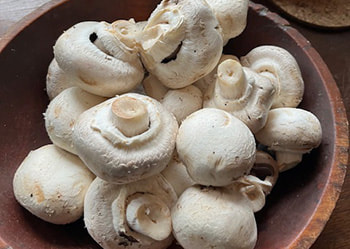
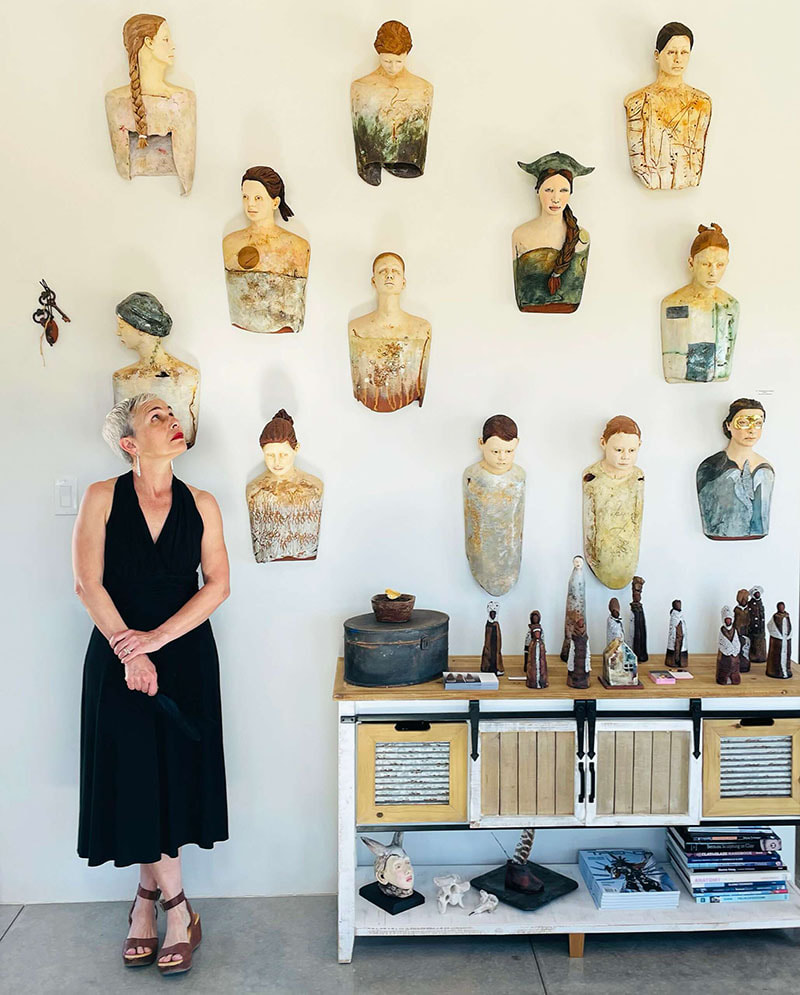



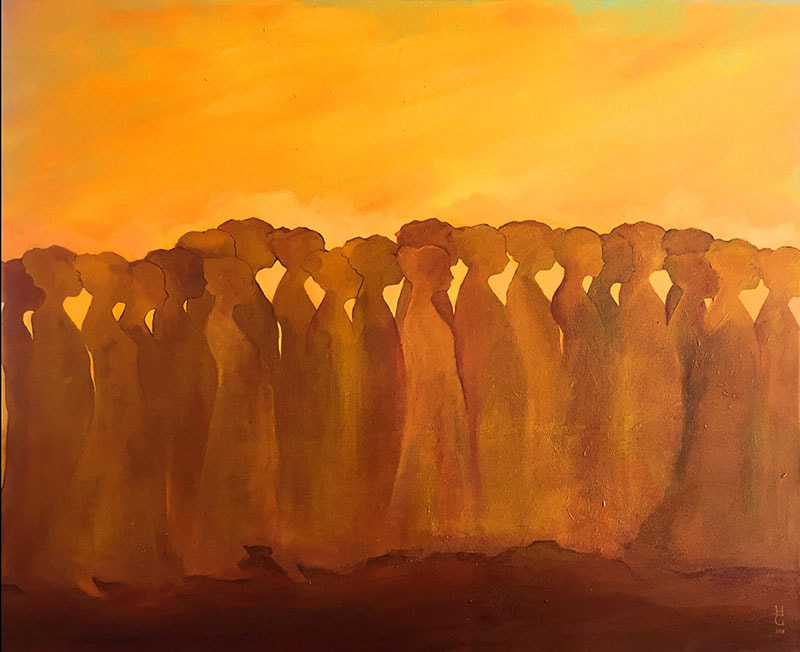






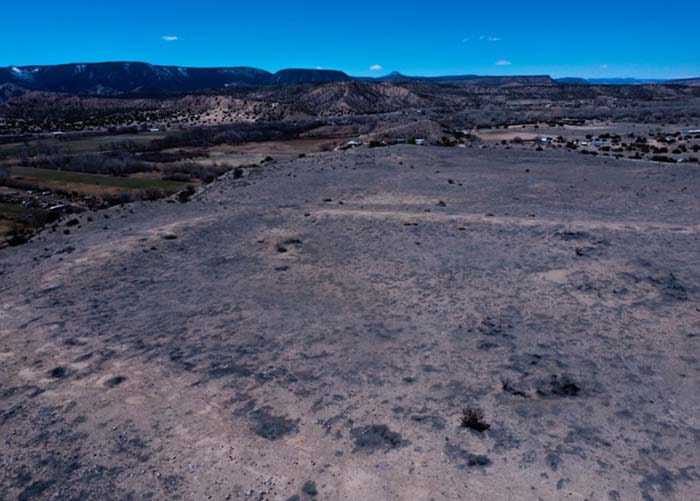
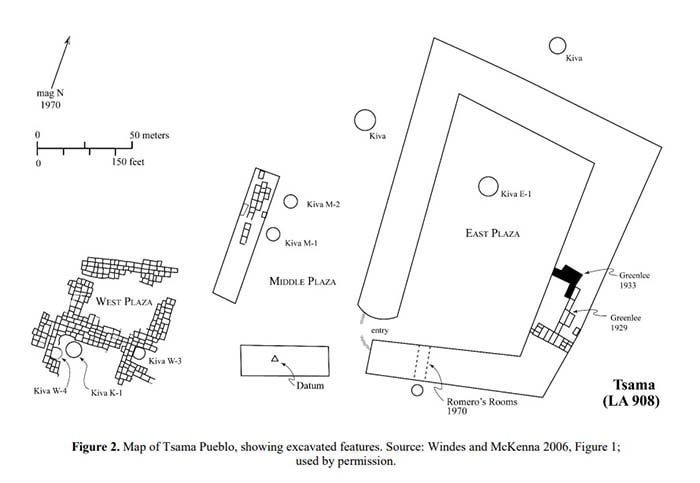
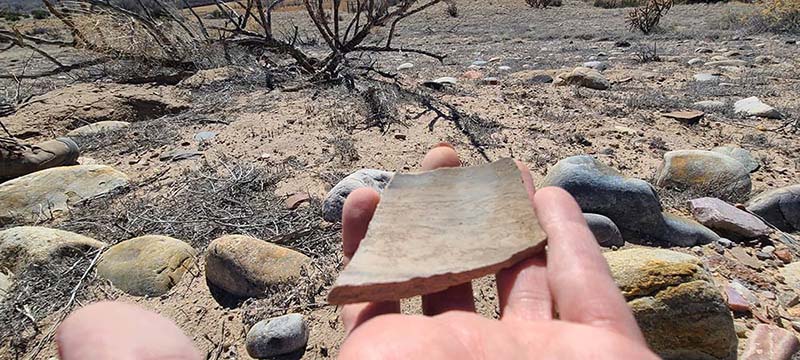


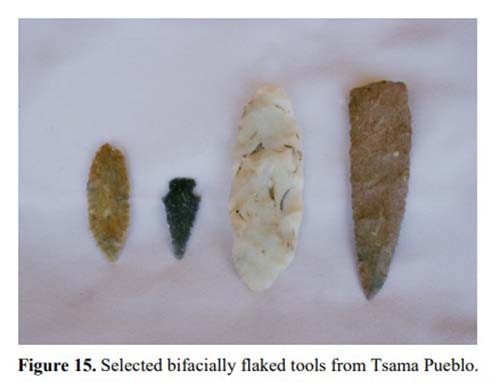
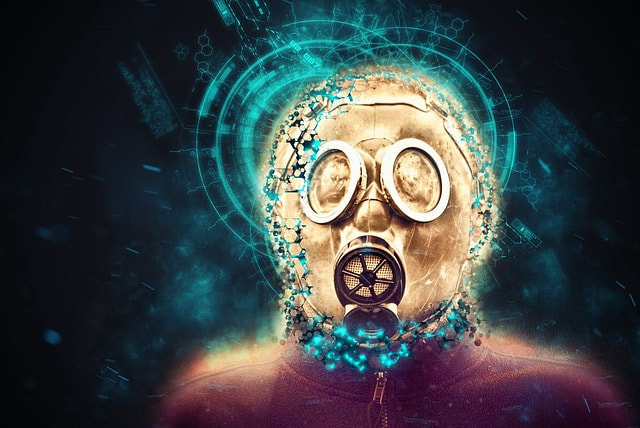
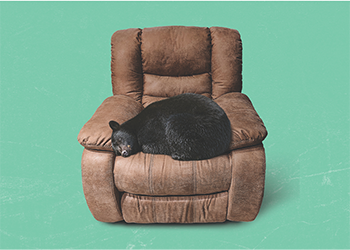
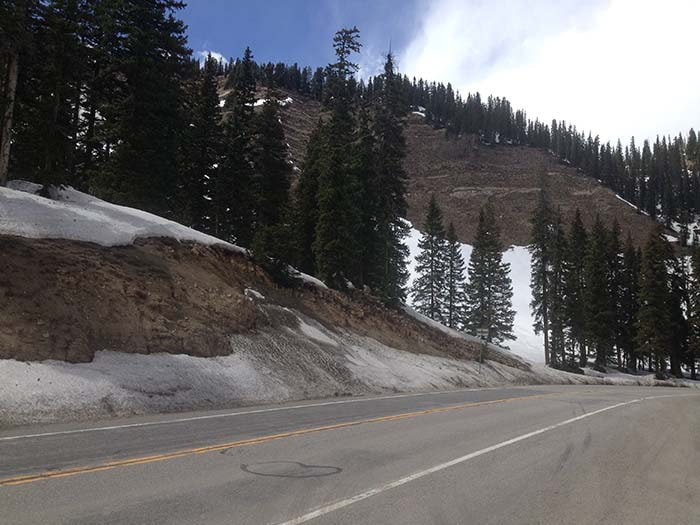
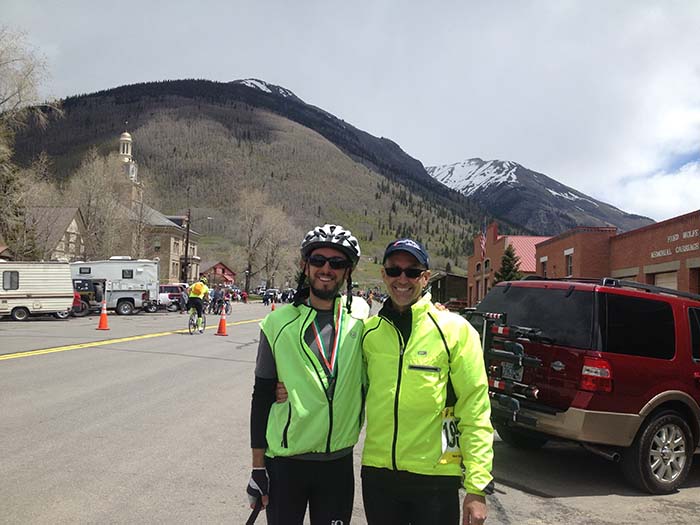




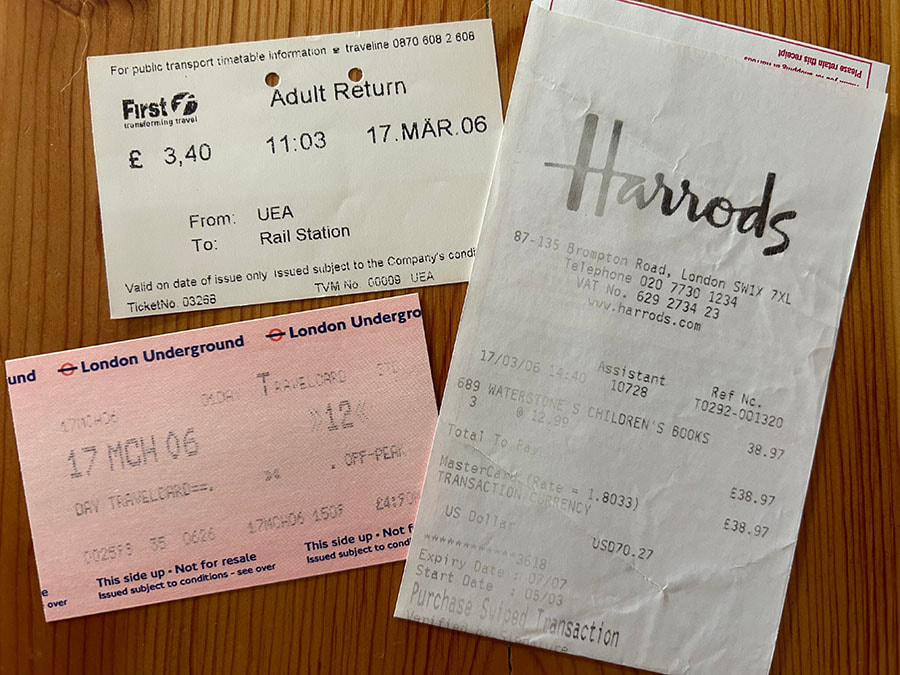
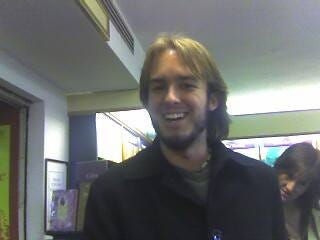

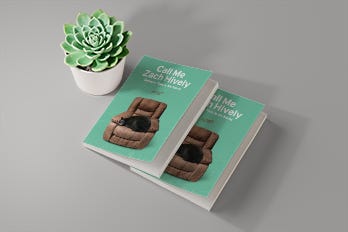
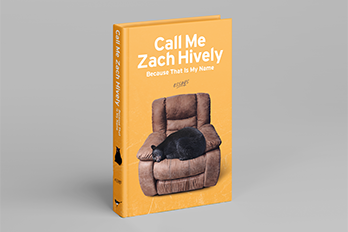
 RSS Feed
RSS Feed